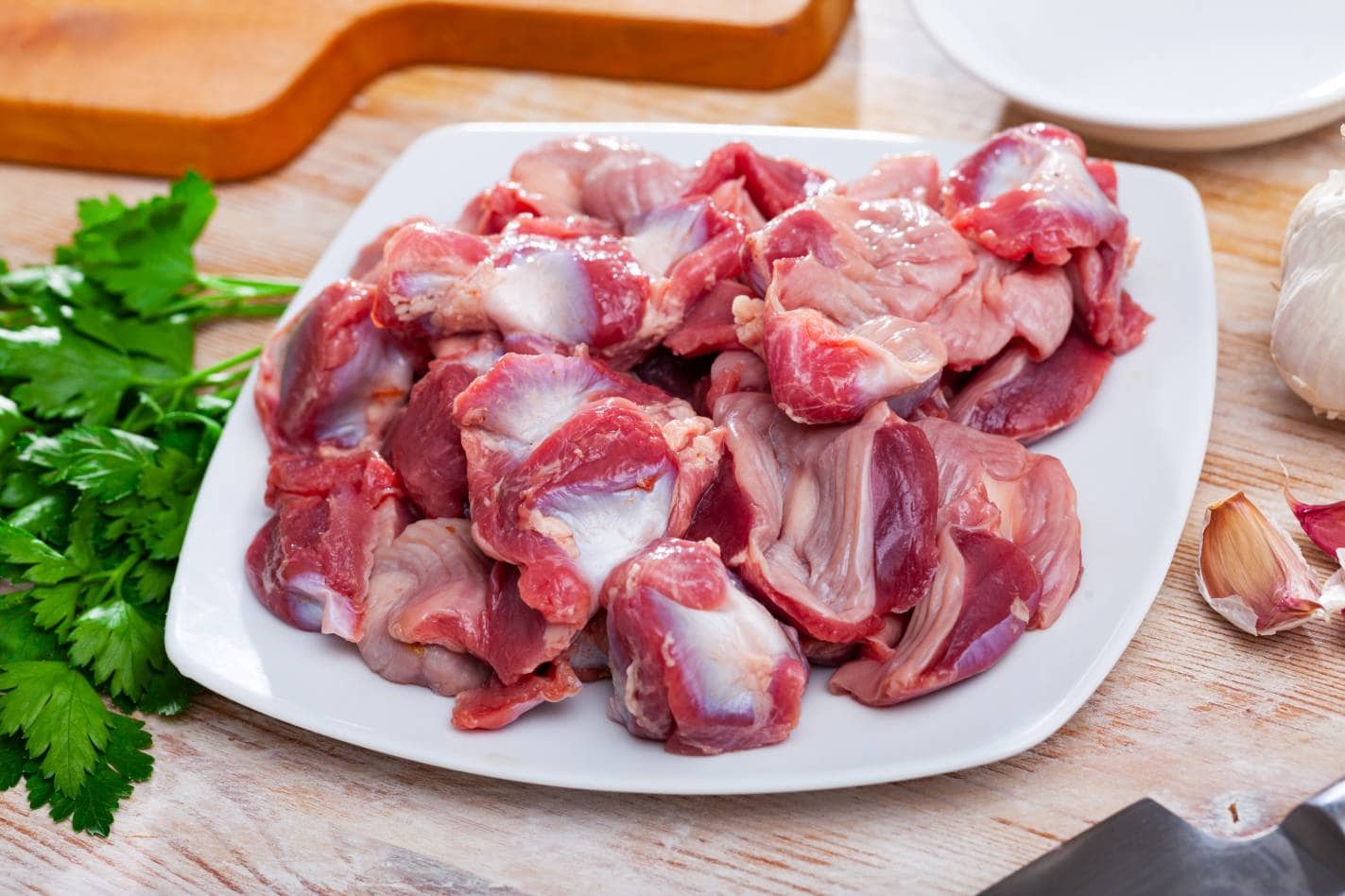Can Dogs Eat Chicken Gizzards? Vet Reviewed Nutrition Facts

Updated on

Though they may not always be appealing to humans, organ meats from animals make a delicious treat for your dog. Organ meats such livers, hearts, and gizzards are excellent protein sources and rich in vitamins and minerals.
Can dogs eat chicken gizzards? Yes, chicken gizzards are a healthy occasional treat for your dog, but there are some things to be aware of to feed this organ meat safely.
What Are Chicken Gizzards?
The gizzard is a muscular organ that’s found in the digestive tract of some birds and fish, including common poultry like turkeys, chickens, and ducks. Gizzards help birds digest seeds and other rough foods.
Organs like gizzards aren’t a big part of American diets, but they’re staples in some cuisines across the world. For example, in Eastern Europe, poultry gizzards are a delicacy.
In fact, gizzards are among the healthiest organ meats. They’re loaded with lean protein with little fat. A 3.5-ounce serving of chicken gizzards offers:
- 94 calories
- 7 grams of protein
- 1 grams of fat
- Zinc
- Selenium
- Phosphorus
- Potassium
- B-complex vitamins
- Magnesium
- Vitamin C
- Copper
- Manganese
Though dogs have different nutritional needs than humans—all of which are provided by a complete commercial dog food—gizzards can offer a healthy occasional treat with some added benefits.

Precautions When Feeding Chicken Gizzards
If you want to give your dog chicken gizzards, or gizzards from other birds, it’s important to do so safely.
Cooking gizzards avoids contamination from bacteria like salmonella. They should be boiled, steamed, or sauteed with little added fat like butter or oil, which can cause digestive upset in dogs. Don’t use any seasonings or spices on the gizzards, including common ones like salt, pepper, or garlic.
When you first feed gizzards to your dog, be sure to take it slowly. Too much of a new food too quickly can make your dog sick.
How Often Can I Feed Gizzards to My Dog?
It’s important not to supplement too much of your dog’s diet, either. Follow the 10% rule with treats of any kind, including gizzards. This means that any treats or supplemental food you offer your dog should not be more than 10% of its caloric intake. If you exceed this percentage, you could disrupt your dog’s nutritional balance.
Fortunately, gizzards are low in fat and calories, but you still have to pay attention to your dog’s intake. Naturally, a larger breed like a Labrador can handle more gizzards than a toy breed like a Chihuahua.
Certain health conditions can affect what your dog can eat safely. If you’re unsure what’s appropriate for your dog, speak to your veterinarian.
Conclusion
Chicken gizzards are a muscular, vitamin-rich organ meat that your dog is sure to enjoy as an occasional treat. It’s important to feed gizzards in moderation, however, and ensure that they’re fully cooked and free of added fat or seasoning that can make your dog sick.
Featured Image Credit: BearFotos, Shutterstock











